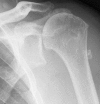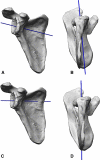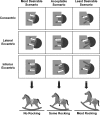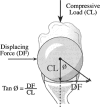How reverse shoulder arthroplasty works
- PMID: 21484471
- PMCID: PMC3148368
- DOI: 10.1007/s11999-011-1892-0
How reverse shoulder arthroplasty works
Abstract
Background: The reverse total shoulder arthroplasty was introduced to treat the rotator cuff-deficient shoulder. Since its introduction, an improved understanding of the biomechanics of rotator cuff deficiency and reverse shoulder arthroplasty has facilitated the development of modern reverse arthroplasty designs.
Questions/purposes: We review (1) the basic biomechanical challenges associated with the rotator cuff-deficient shoulder; (2) the biomechanical rationale for newer reverse shoulder arthroplasty designs; (3) the current scientific evidence related to the function and performance of reverse shoulder arthroplasty; and (4) specific technical aspects of reverse shoulder arthroplasty.
Methods: A PubMed search of the English language literature was conducted using the key words reverse shoulder arthroplasty, rotator cuff arthropathy, and biomechanics of reverse shoulder arthroplasty. Articles were excluded if the content fell outside of the biomechanics of these topics, leaving the 66 articles included in this review.
Results: Various implant design factors as well as various surgical implantation techniques affect stability of reverse shoulder arthroplasty and patient function. To understand the implications of individual design factors, one must understand the function of the normal and the cuff-deficient shoulder and coalesce this understanding with the pathology presented by each patient to choose the proper surgical technique for reconstruction.
Conclusions: Several basic science and clinical studies improve our understanding of various design factors in reverse shoulder arthroplasty. However, much work remains to further elucidate the performance of newer designs and to evaluate patient outcomes using validated instruments such as the American Society for Elbow Surgery, simple shoulder test, and the Constant-Murley scores.
Figures










References
-
- Bayley J, Kessel L. The Kessel total shoulder replacement. In: Bayley I, Kessel L, editors. Shoulder Surgery. New York: Springer-Verlag; 1982. pp. 160–164.
-
- Boileau P, Chuinard C, Roussanne Y, Bicknell RT, Rochet N, Trojani C. Reverse shoulder arthroplasty combined with a modified latissimus dorsi and teres major tendon transfer for shoulder pseudoparalysis associated with dropping arm. Clin Orthop Relat Res. 2008;466:584–593. doi: 10.1007/s11999-008-0114-x. - DOI - PMC - PubMed
-
- Boileau P, Chuinard C, Roussanne Y, Neyton L, Trojani C. Modified latissimus dorsi and teres major transfer through a single delto-pectoral approach for external rotation deficit of the shoulder: as an isolated procedure or with a reverse arthroplasty. J Shoulder Elbow Surg. 2007;16:671–682. doi: 10.1016/j.jse.2007.02.127. - DOI - PubMed
Publication types
MeSH terms
LinkOut - more resources
Full Text Sources

